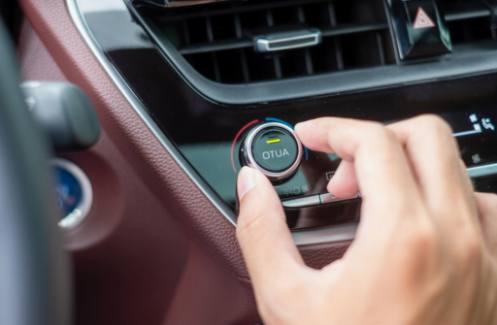Windscreen Washer Pump: Repair or Replace?
22 December 2025 by Faye M.When it comes to maintaining the safety and functionality of your vehicle, every component plays a crucial role. The windscreen washer pump is no exception, as it ensures clear visibility while driving in various weather conditions. However, like any part of your car, the windscreen washer pump may encounter issues that require attention. In this article, we will explore the signs that indicate your windscreen washer pump needs maintenance, how to diagnose potential problems, common issues that affect the pump, and whether to opt for repair or replacement. By understanding the options available and the costs involved, you can make an informed decision to keep your windscreen washer pump in optimal condition.

Signs Your Windscreen Washer Pump Needs Attention
The windscreen washer pump is an essential component of your vehicle's windshield washing system. It is responsible for pumping the cleaning fluid from the reservoir to the nozzles, ensuring that your windshield remains clear and clean while driving. However, like any other mechanical part, the windscreen washer pump is prone to wear and tear over time. There are several signs that may indicate your windscreen washer pump requires attention. One of the most common signs is a lack of windshield washer fluid spraying onto the windshield when the washer button is pressed. This may indicate a clogged or malfunctioning pump that is not able to release the fluid properly. Another sign that your windscreen washer pump needs attention is a weak or inconsistent spray pattern. If you notice that the cleaning fluid is not being sprayed evenly onto the windshield, it could be a sign of a faulty pump or clogged nozzles. Additionally, if you hear a buzzing or humming noise when pressing the washer button but no fluid is being dispensed, it may indicate a malfunctioning pump motor. Furthermore, leaks around the pump area or a visible crack or damage to the pump itself are also signs that the windscreen washer pump needs attention and may require repair or replacement. It is important to address these signs promptly to ensure that your windshield washing system remains in proper working condition to maintain visibility and safety while driving.Diagnosing Issues with the Windscreen Washer Pump
The windscreen washer pump is responsible for spraying the windshield with washer fluid to help maintain clear visibility while driving. When the pump is not functioning properly, it can lead to reduced visibility and safety hazards. Diagnosing issues with the windscreen washer pump is essential in order to determine the best course of action for repair or replacement. One common sign of a faulty windscreen washer pump is the lack of washer fluid being sprayed onto the windshield when the washer button is activated. This can indicate that the pump is not functioning or that there is a blockage in the system preventing the fluid from reaching the windshield. Additionally, unusual noises coming from the pump when the washer button is pressed can also indicate a problem with the pump. In some cases, the issue may not actually be with the pump itself, but rather with the electrical connections or wiring that power the pump. Testing the electrical connections and ensuring there are no loose or damaged wires is an important step in diagnosing issues with the windscreen washer pump. Overall, diagnosing issues with the windscreen washer pump involves troubleshooting the functionality of the pump, checking for blockages in the system, and assessing the condition of the electrical connections. Proper diagnosis will ultimately determine the appropriate course of action for repairing or replacing the windscreen washer pump.Common Problems That Affect Windscreen Washer Pumps
Windscreen washer pumps are essential for keeping your car's windscreen clean and clear, but they can experience various problems that affect their performance. Common problems that affect windscreen washer pumps include:1. Clogged Nozzles: Over time, dirt and debris can build up in the nozzles of the washer system, causing them to become clogged. This can result in a weak or uneven spray pattern, making it difficult to effectively clean the windscreen.
2. Pump Failure: The pump itself can fail due to wear and tear or electrical issues. This can result in no washer fluid being dispensed at all, leaving your windscreen dirty and obstructed.
3. Leaks: Hoses and connections in the washer system can develop leaks, leading to a loss of washer fluid and reduced functionality.
4. Frozen Lines: In cold weather, the washer fluid lines can freeze, preventing the fluid from reaching the nozzles and ultimately the windscreen.
5. Low Washer Fluid Level: A simple but often overlooked problem, a low washer fluid level can cause the pump to struggle or fail to dispense any fluid at all. Understanding these common problems with windscreen washer pumps can help you identify when your system may need attention and whether a repair or replacement is necessary.